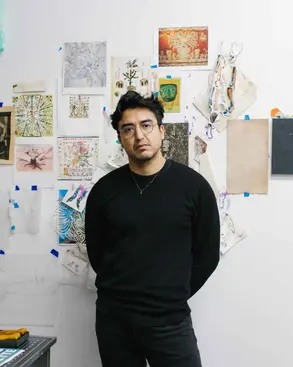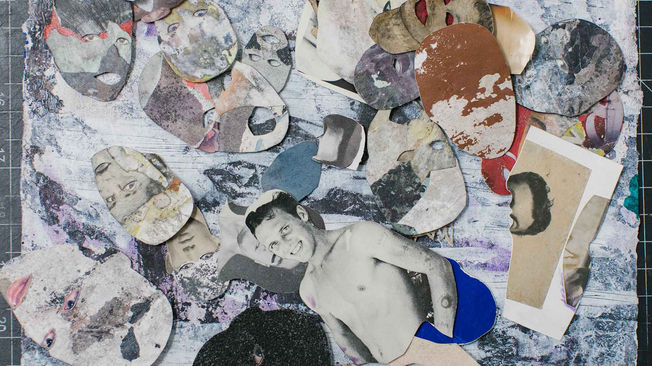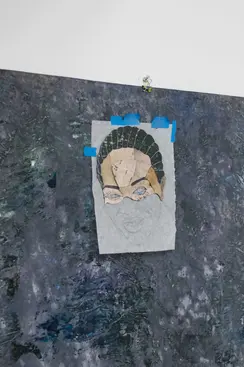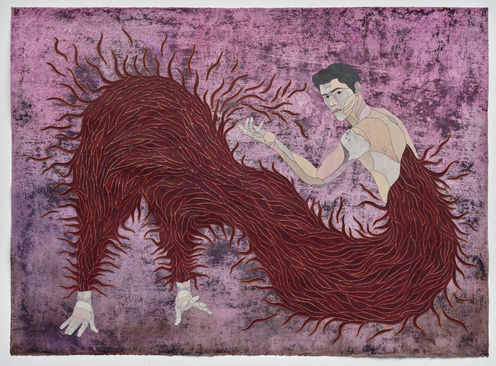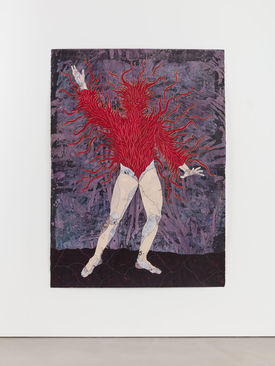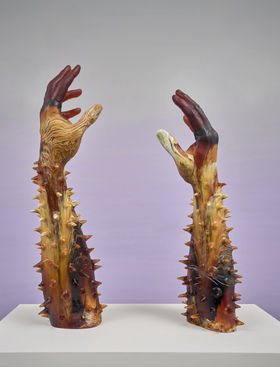For my further artistic practice I would like research the accelerating effect the implementation of digital technology and algorithms has on an individual.
For my further artistic practice I would like research the accelerating effect the implementation of digital technology and algorithms has on an individual.
Artworks and Processes
Artworks and Processes
Artworks and Processes
Artworks and Processes
Here is a heading
Ich bin ein Textabschnit. Klicke hier, um deinen eigenen Text hinzuzufügen und mich zu bearbeiten. Ich bin ein Textabschnitt. Klicke hier, um deinen eigenen Text hinzuzufügen und mich zu bearbeiten.Ich bin ein Textabschnitt. Klicke hier, um deinen eigenen Text hinzuzufügen und mich zu bearbeiten.Ich bin ein Textabschnitt. Ich bin ein Textabschnitt. Klicke hier, um deinen eigenen Text hinzuzufügen und mich zu bearbeiten. Ich bin ein Textabschnitt. Klicke hier, um deinen eigenen Text hinzuzufügen und mich zu bearbeiten.Ich bin ein Textabschnitt. Klicke hier, um deinen eigenen Text hinzuzufügen und mich zu bearbeiten.Ich bin ein Textabschnitt.
Here is a heading
Ich bin ein Textabschnit. Klicke hier, um deinen eigenen Text hinzuzufügen und mich zu bearbeiten. Ich bin ein Textabschnitt. Klicke hier, um deinen eigenen Text hinzuzufügen und mich zu bearbeiten.Ich bin ein Textabschnitt. Klicke hier, um deinen eigenen Text hinzuzufügen und mich zu bearbeiten.Ich bin ein Textabschnitt. Ich bin ein Textabschnitt. Klicke hier, um deinen eigenen Text hinzuzufügen und mich zu bearbeiten. Ich bin ein Textabschnitt. Klicke hier, um deinen eigenen Text hinzuzufügen und mich zu bearbeiten.Ich bin ein Textabschnitt. Klicke hier, um deinen eigenen Text hinzuzufügen und mich zu bearbeiten.Ich bin ein Textabschnitt.
Felipe Baeza

© Felipe Baeza, Por caminos ignorados, por hendiduras secretas, por las misteriosas vetas de troncos recién cortados (2020).
“In making the invisible visible and vice versa I aim to challenge those notions that keep people in the margins.”
– Felipe Baeza
queer desire
immigrant experience
body as a landscape
fugitive bodies
making historically invisible bodies visible
ruptured and regenerated bodies
the body in flux
disembodiment
spatial transcendence
existing as an "other"
a reality in line with fundamental truths
hybrid creatures
Artist website → http://www.felipebaeza.com/
Mexican-American artist Felipe Baeza explores the fugivity of queer and immigrant bodies. He uses the body as a landscape breaking it up into its “most fundamental components” (Miller, 2022). He creates a distinctive language of fantasy that encodes queer desire and the immigrant experience. (Aaron, 2022; Calderon, 2022)
“My work utilises art as a tool to create political spaces. I see the body as a landscape because that’s the only landscape some of us have. I aim to render visible those bodies and histories that have been rendered invisible and have disappeared. In making the invisible visible and vice versa I aim to challenge those notions that keep people in the margins. In these pieces I exploit collage and printmaking elements to show how the body undergoes fragmentation or is pulled apart and dismembered, then reconstructed. This leads to questions I present such as how one honours those who are no longer with us and have disappeared in the process of migrating for a better life.” (Baeza)
Rupture and regeneration

Myth, migration and identity are themes woven through this exhibition. Stories of rupture and regeneration from Mayan and Afrofuturist mythology permeate the richly coloured and textured paintings. Dislocation is evident in titles such as “I open against my will dreaming of other planets I am dreaming of other ways of seeing this life,” and others mixing Spanish and English. (HC, 2019)

Selection of works from Gente del Occidente de México I, II 2017-2019, 20 double-sided collages on paper
Queer and immigrant bodies
In the studio
In his studio Baeza collages imagery of erotica and further abstracts and anonymizes these already anonymous brown bodies “of uncertain origin.” (Nyongó, 2022) “Inspirational images from magazines and other printed matter cover the workspace walls while similar cutouts of faces, bodies, and limbs are meticulously sorted into delicate piles and shallow vessels, threatened to disarray by a breath or a sudden movement. With these disembodied parts, and a variety of other media—collage, printmaking, embroidery, painting, and sculpture—Baeza creates work that explores queer and immigrant histories, particularly the “fugitivity” of queer Brown bodies.” (Aaron, 2022)
Fugitive bodies
The works are revolving around truths about gendered subjectivity, particularly when these truths have been lost due to people moving across borders because of various forms of subjugation. There is a yearning for place in Baeza’s work and also a yearning for transcendence, for a belonging beyond place. The bodies suggest that they are already of the Earth, the land, the natural world, and will forever be in flux. “These “fugitive bodies” refer to the constant metamorphic state that a queer brown migrant embodies as they traverse socially constructed borders, whether those imposed by the government or by hegemonic values” (Calderon, 2022). It’s a “term connected to many ways of being,” the artist revealed to The Brooklyn Rail. “The fugitive is always running and escaping, [and] it is connected to liminal and interstitial space.” (Aaron, 2022)
Por caminos ignorados, por hendiduras secretas, por las misteriosas vetas de troncos recién cortados, 2022
Made Into Being, 2022
Wayard, 2022
A self that is not quite here but always in process, 2022
Baeza’s work addresses a psychosocial imbalance in existing as an ‘other.’ Baeza’s landscapes show us a spiritual procession toward conceiving of a reality more in line with fundamental truths, a realm where bodies assimilate into the cactus and soil rather than into the constrictive identity politics wedded to our nationalities or sexual orientations.
(Calderon, 2022)
Figures of hybrid creatures are set against nondescript backgrounds on mixed mediums. Humanoid figures burst with foliage, both planted and uprooted. He constructs and reconstructs them and their worlds, creating “new imaginaries of neither here nor there, allowing the fugitive body to make use of imagination for liberation, to transcend circumstances.” (Aaron, 2022)
References
Aaron, R (2022) In His Second Solo Exhibition, Felipe Baeza Explores Queer and Immigrant Bodies. Available at: https://www.culturedmag.com/article/2022/09/18/felipe-baeza-solo-exhibition-immigrant-bodies (Accessed: 01.11.22)
Calderon, B (2022) Critic’s Spotlight: How Felipe Baeza’s Symbolically Charged Dreamscapes Give Body to Contemporary Struggles at the Venice Biennale. Available at: https://news.artnet.com/opinion/felipe-baeza-venice-2114143 (Accessed: 01.11.22)
Hackney Citizen (2019) Felipe Baeza, Maureen Paley, exhibition review: ‘Rupture and regeneration’. Available at: https://www.hackneycitizen.co.uk/2018/11/19/felipe-baeza-maureen-paley-gallery-exhibition-review/ (Accessed: 01.11.22)
Miller, M (2022) The Body in Pieces. Available at: https://static1.squarespace.com/static/515cbc15e4b054dae3fdf93d/t/63465672efc58d1201fb3855/1665554035935/Mary+Miller+-+2022.pdf (Accessed: 01.11.22)
Nyongò, T (2022) Felipe Baeza. Available at: https://static1.squarespace.com/static/515cbc15e4b054dae3fdf93d/t/6318d72b144a74635ff05e51/1662572335254/Tavia+Nyong'o.pdf (Accessed: 01.11.22)
